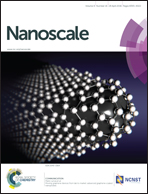Automatic illumination compensation device based on a photoelectrochemical biofuel cell driven by visible light†
Abstract
Inverted illumination compensation is important in energy-saving projects, artificial photosynthesis and some forms of agriculture, such as hydroponics. However, only a few illumination adjustments based on self-powered biodetectors that quantitatively detect the intensity of visible light have been reported. We constructed an automatic illumination compensation device based on a photoelectrochemical biofuel cell (PBFC) driven by visible light. The PBFC consisted of a glucose dehydrogenase modified bioanode and a p-type semiconductor cuprous oxide photocathode. The PBFC had a high power output of 161.4 μW cm−2 and an open circuit potential that responded rapidly to visible light. It adjusted the amount of illumination inversely irrespective of how the external illumination was changed. This rational design of utilizing PBFCs provides new insights into automatic light adjustable devices and may be of benefit to intelligent applications.


 Please wait while we load your content...
Please wait while we load your content...